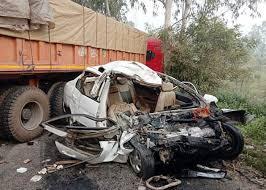Since the start of 2023, Tanzania has experienced a troubling rise in road traffic accidents, with over 1,550 people killed in crashes by mid-December. These accidents have not only taken a heavy human toll but also exerted a significant economic and social burden on the country. Addressing the issue of road safety requires a comprehensive understanding of the causes of accidents, their impacts on public health and the economy, as well as potential solutions.
Causes of road traffic accidents in Tanzania
The causes of road traffic accidents in Tanzania are multi-faceted, stemming from a combination of human error, vehicle conditions, and poor infrastructure.
- Human Factors: Driver behavior plays a crucial role in road safety. Speeding, reckless driving, failure to follow traffic laws, and distracted driving are some of the most common causes of accidents. Alcohol consumption and fatigue also contribute to a significant number of crashes, particularly during long-distance travel.
- Poor Road Conditions: A significant portion of Tanzania's road network, especially in rural areas, is in poor condition. Potholes, lack of road markings, and insufficient lighting make driving hazardous. Many roads are narrow and unable to accommodate the growing number of vehicles, leading to frequent accidents.
- Vehicle Conditions: Many vehicles on Tanzanian roads are poorly maintained, which increases the likelihood of mechanical failures. Faulty brakes, worn tires, and outdated safety features have all been linked to serious accidents.
- Overloading: Overloading is another critical factor that contributes to road accidents. Buses and trucks often carry more passengers and goods than their capacity allows, leading to instability, reduced maneuverability, and an increased risk of collisions.
Health and economic impacts
Road accidents in Tanzania have far-reaching consequences on both the health sector and the economy.
- Health Impact: Road traffic injuries are a leading cause of hospital admissions and a major contributor to the burden on Tanzania's healthcare system. Victims of road accidents often require long-term medical care and rehabilitation, which strains already limited healthcare resources. Moreover, the psychological trauma faced by survivors and their families cannot be overstated.
- Economic Impact: The economic cost of road traffic accidents is substantial. According to studies, road accidents in Tanzania result in a loss of approximately 3% of the country's Gross Domestic Product (GDP). These losses arise from healthcare expenses, lost productivity due to injuries and deaths, and damage to vehicles and infrastructure. Additionally, many accident victims are of working age, which further exacerbates the economic consequences by removing key contributors from the workforce.
Efforts to improve Road Safety
Several initiatives have been launched to curb the growing number of road accidents in Tanzania, but much more needs to be done.
- Government policies: The Tanzanian government has made efforts to improve road safety through policies and regulations. These include stricter enforcement of traffic laws, the introduction of speed limits, and mandatory vehicle inspections. The use of seat belts, helmet laws for motorcyclists, and campaigns to reduce drunk driving have also been promoted.
- Road infrastructure development: Ongoing road infrastructure projects are expected to improve safety conditions. The expansion and modernization of major highways, improved road signage, and better traffic management systems can reduce the frequency and severity of accidents.
- Driver education and awareness campaigns: Efforts to educate drivers on safe driving practices are crucial. Road safety campaigns targeting both professional drivers (e.g., bus and truck operators) and private vehicle owners can help change driving behaviors. Public awareness programs focusing on the dangers of speeding, drunk driving, and the importance of regular vehicle maintenance are key to preventing accidents.
- Global support and partnerships: Organizations like the Global Road Safety Facility (GRSF) have been working with the Tanzanian government to improve road safety. Their involvement includes providing funding for infrastructure improvements, capacity-building efforts, and data collection systems that can help policymakers make informed decisions.
The way forward
To successfully reduce road traffic accidents in Tanzania, a multi-pronged approach is needed. While government initiatives are essential, they must be supported by public cooperation and international partnerships. Prioritizing road safety not only saves lives but also helps to alleviate the economic burden that road accidents place on the country.
Future interventions should focus on improving road conditions, strengthening enforcement of traffic laws, enhancing vehicle safety standards, and promoting a culture of responsible driving. By addressing the root causes of road accidents and implementing sustainable solutions, Tanzania can pave the way for safer roads and a more secure future for all its citizens.
References
- Xinhua. (2023). 1,550 people killed in road accidents in Tanzania since start of 2023: minister. Link
- Global Road Safety Facility. (n.d.). Tanzania Road Safety Profile. Link
- ResearchGate. (2009). Road Traffic Accidents in Tanzania: A Ten-Year Epidemiological Appraisal. Link
- Global Scientific Journal. (2021). Road Accidents in Tanzania: Causes, Impact, and Solution. Link
- ScienceDirect. (2022). Road Traffic Accidents in Tanzania: Exploring the Economic and Health Impacts. Link

